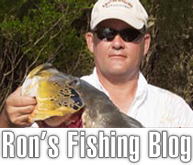Ron’s Fishing Tips and Stories: The Impact of Florida Strain Black Bass
 The Florida strain of black bass has had a tremendous impact all over the USA and Mexico. For many years biologist thought that the big fish caught in Florida were the same strain of northern black bass as most states stocked in their lakes. They thought that the mild climate and longer growing season in Florida was the reason the bass grew larger. Of course everyone knows now that the Florida strain is very different from the northern strain of bass.
The Florida strain of black bass has had a tremendous impact all over the USA and Mexico. For many years biologist thought that the big fish caught in Florida were the same strain of northern black bass as most states stocked in their lakes. They thought that the mild climate and longer growing season in Florida was the reason the bass grew larger. Of course everyone knows now that the Florida strain is very different from the northern strain of bass.
Texas is a great example of the huge effect that Florida strain of bass has had on black bass fishing. The impact of this bigger bass has increased the fishing tourism to our state by millions of dollars. There probably is no bass fishermen anywhere who doesn’t know about Lake Fork in Texas or lakes El Salto and Comedero in Mexico.
How did this all happen? Many years ago, when I had 2 lodges on Lake Guerrero in Mexico, we had a huge bass die-off one summer due to oxygen depletion. It killed over 100 tons of black bass, all over 3 pounds. We went maybe 2 years without catching any fish over 2 pounds as the bass simply didn’t grow. Texas had started experimenting with the Florida bass maybe about 1969 or 1970. They had brought Florida bass and Tilapia to a small lake at Trinidad, Texas in 1972 to collect data on the fish before stocking this strain of new fish into Texas Lakes. The lake was a power plant lake belonging to Texas Power & Light. It was my favorite and my family favorite lake to bass fish since it was only 5 miles from where I grew up.
Maybe about 1975 I wanted to stock Lake Guerrero with these Florida bass, so I hired a consultant who was retired from Texas Parks & Wildlife. His name was Charles Inman and he had been deeply involved in the state program of stocking Floridas into Texas Lakes. Charles came to my office and we spent the day talking about Florida bass. Oh my gosh, how much did I learn! Originally the state and everyone thought you could determine a Florida bass by simply counting the scales along the lateral line. If a bass had from 69 to 72 scales along the lateral line from head to tail it was a Florida strain of bass. Over time the biologist found that this was not a reliable system. Most fishermen had their own way of telling a Florida bass by the color, or the shape of the body, or many different systems. ALL THESE SYSTEMS ARE TOTALLY UNRELIABLE!
There is only one way to determine if a bass is Florida or not…. It is to have a biologist run an electrophoresis test on the liver of the bass. When I was importing Florida bass into Mexico to stock El Salto I had Dr. Whitmore at the University of Arlington run the test on the liver of a few fish to make sure they were pure strain Floridas.
I bought the bass from Gary White hatchery in Van, Texas and flew them to Mexico in charter planes. A few bags of fish I shipped on Mexicana Airlines. The stocking of Floridas in Lake Guerrero came from John Wood, the head of Fish and Game in Florida. I flew John and his wife to Mexico to show us how to build the rearing ponds for the Florida fry bass John donated to my project for Guerrero. That program worked to perfection and gave us a few more years of good business.
Later in I believe 1995 or 1996 we faced the same problem as Guerrero at Lake El Salto with only small bass. This time I went to Catfish Meadows in Buffalo, Texas. I bought f1 Florida hybrids (200,000) and flew them into Mexico for Salto. In the meantime, I donated 51 mature Floridas to the Fish & Wildlife hatchery in Culican, Mexico with a contract to buy the fry each year for .05 cents each year. Using this program each year allowed us to stock Comedeo , Huites, and more Floridas for Salto. A great program that helped many thousands of Americans catch their fish of a lifetime. In total we stocked about 1 million Florida bass into these now wonderful lakes. This wonderful Mexico program was all made possible by a wonderful lady who was the head of Fisheries in Mazatlan, Mexico at the time. Her name is Helen Collard and she deserves all the credit since she gave me the permits to legally bring in these Florida bass and stock them into these Sinaloa Lakes.
Texas has had fantastic luck with their Florida programs. The lake record in Texas for many, many years was 13 pounds caught in Lake Medina outside of San Antonio. That record has been broken hundreds of times since the stocking of Florida’s into Texas Lakes.
As Paul Harvey would say— NOW YOU HAVE THE REST OF THE STORY REGARDING FLORIDA BASS.
GOOD LUCK WITH YOUR BASS FISHING
Let us know how we can help YOU with an international adventure!

